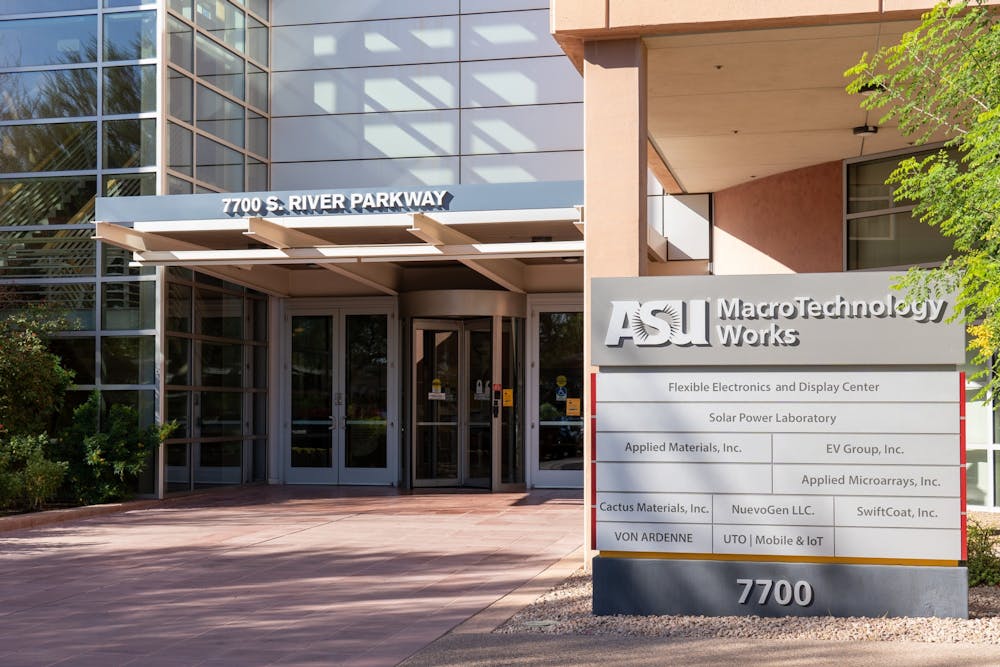Manufacturing company Applied Materials is moving in with the Ira A. Fulton Schools of Engineering, and faculty and students will work on numerous projects with them.
Applied Materials is one of the largest developers and suppliers in the semiconductor industry, said Michael Kozicki, a professor of electrical engineering. A semiconductor is a material used in everyday technology that conducts electricity across the device's circuits.
Kozicki said these highly sophisticated materials are essential to the technology we use every day.
"These are the tools that create the chips that go into everything," Kozicki said. "The degree of precision, science and technology that goes into it is just absolutely amazing."
Zachary Holman, associate professor of electrical engineering and one of the faculty members conducting research, said semiconductor materials are practically everywhere.
"Computer chips, phone chips, wireless communication devices, satellites, lasers, LEDs and basically any modern electronic is built with semiconductors," Holman said. "They are the materials that enable our technologically driven life."
According to Kozicki, ASU and Applied Materials began discussing potential partnerships on a casual basis around a year ago and both realized they would save resources by having a master agreement. This way they could work together on anything, not restricted to one project or theme.
The company has a lease of lab space at MacroTechnology Works, a research building located at the ASU Research Park. The park leases space to companies and collaborates with them.
Kozicki believes it's perfect for the company because of the high cost of leasing space in Santa Clara, Calif. where Applied Materials is based. Employees can easily fly to the location, and ASU has the infrastructure at a more practical cost.
Numerous faculty members were asked to take part in the collaboration and other labs will be used to develop new devices. Results will be shared with Applied Materials to use their own equipment and replicate the structure to create something useful to them.
Holman connected researchers directly to the company to begin their own projects with different teams. Semiconductor processing involves numerous aspects, and faculty working on targeted areas helps the process.
Heather Emady, an assistant professor of chemical engineering, is responsible for a project related to powder flow and heat transfer, both of which improve manufacturing efficiency. Emady believes this collaboration is a great way to enrich learning about the work's fundamentals.
"In (the) industry, there are needs that must be met, and academics can help by diving more deep and studying things research-wise that (companies) don’t have the time to do," Emady said.
Working with an industry giant doesn't come without challenges, according to faculty. There is constant need for negotiations and Applied Materials has established practices. Kozicki said the collaboration is taking a different approach, focusing on solutions and the future development to enable the next generation of chips.
"It can be very difficult for a university to work with companies in the semiconductor industry because they are very production-oriented and way ahead of us in our respect," Kozicki said. "But what we can do is help them seek out and develop new and more exciting ways of the equipment."
The company also agreed to fund at least five years of research in the engineering schools, with student involvement as the principal focus. Primarily graduate students will work on the project teams with some undergraduate involvement as well.
"The large majority of the funding is going to pay for student researchers to work on the project," said Holman. "That’s always the largest expense of any research project."
Despite challenges, faculty members hope this partnership grows into an ongoing collaboration on a much larger scale.
"The long-term goal is to keep this relationship for a very long time and this is only the start of it," Emady said. "Applied Materials wants to provide continued funding for ASU which also benefits them greatly to research deeply into things that they don’t have the time to do themselves."
When asked for comment, a representative for Applied Materials responded and said the company has "no further comment about this collaboration at this time."
Reach the reporter at amley@asu.edu and follow @MartyLey_ on Twitter.
Like The State Press on Facebook and follow @statepress on Twitter.




